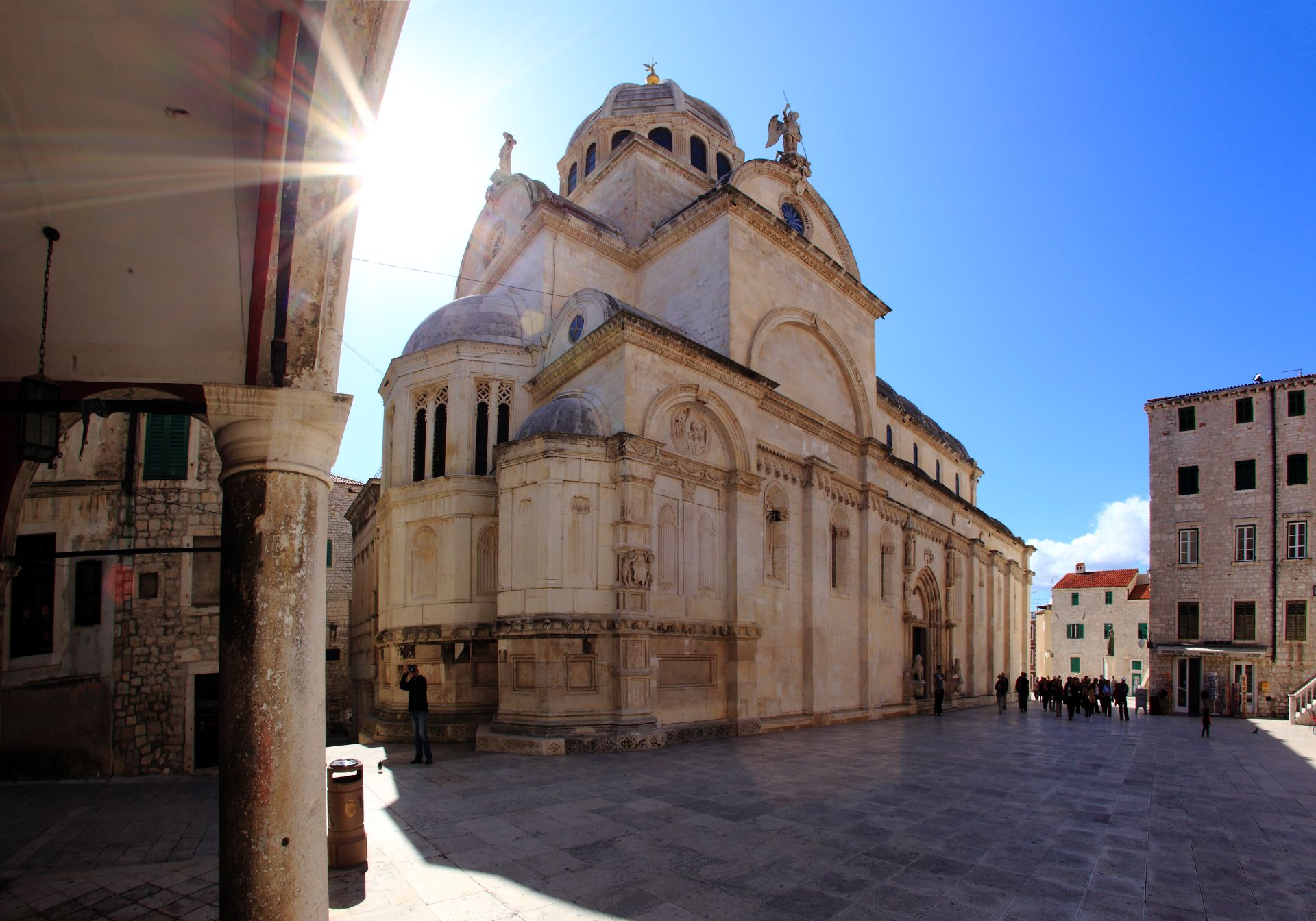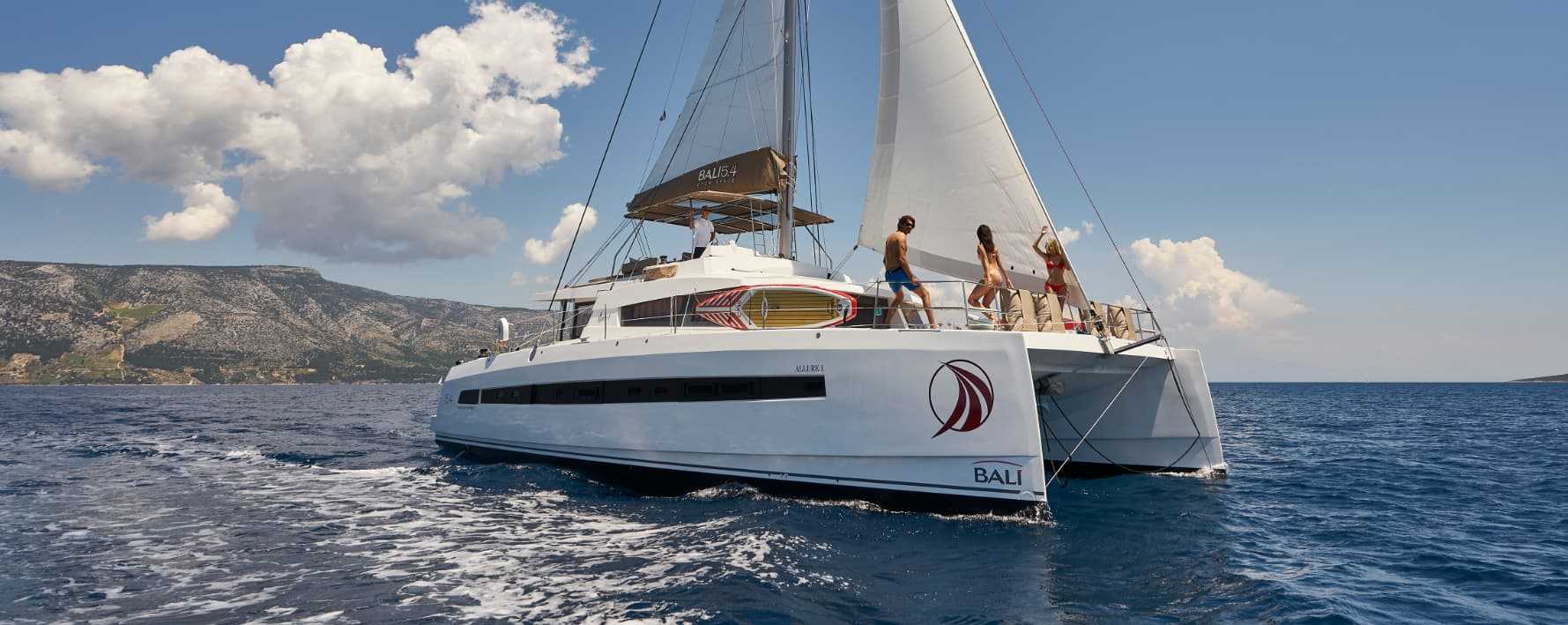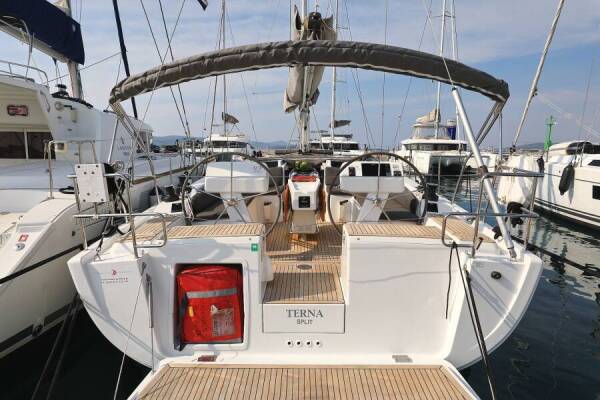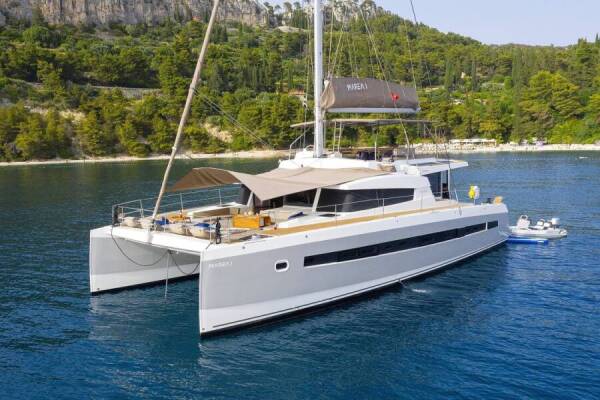From Šibenik to Kaprije: an authentic nautical adventure through the heart of Dalmatia
Šibenik. The name spoken by all lovers of the Adriatic when they want to discover that authentic Dalmatian vibe that blends history, nature, and the sea—all in one perfect embrace. This city, situated in the heart of Central Dalmatia, is not just a historical gem of Croatia but also a crossroads of nautical routes leading to one of the Mediterranean's most attractive regions. Discover what these plains between sea and sky conceal, among islands that attract more than tourists—they call out to those who love the freedom of sailing.
Šibenik – City of Two UNESCO Jewels and a Marine Oasis
Unlike many Dalmatian towns that live solely off their magical coastline and sunny beaches, Šibenik prides itself on two major UNESCO sites—the Cathedral of St. James, a masterpiece of Gothic and Renaissance architecture, and St. Nicholas Fortress, the guardian at the entrance to the Šibenik Channel. But beneath the historic walls, around the city are ports and marinas that push Šibenik directly onto the map of the most important nautical destinations.
This is a route that takes you through seven days of sailing, across diverse islands and national parks, offering an experience rarely found anywhere else.
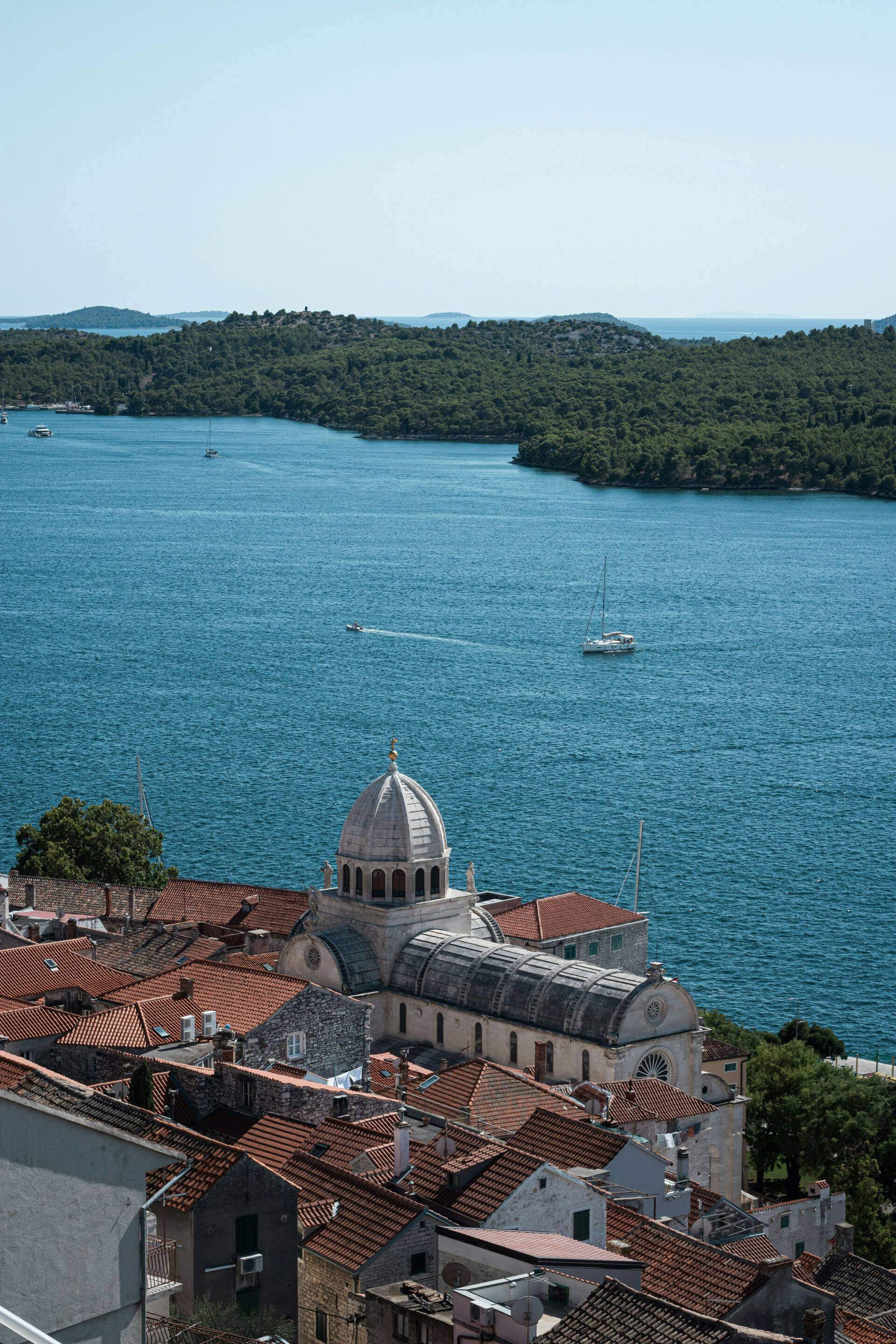
Why is this route special?
At first glance, one might think it’s just a classic tourist itinerary—but it’s not. This route gives you the opportunity to fully experience the Adriatic from a different perspective: from the sea, from small coves and untouched nature, far from mass tourism and crowds. Every island has its own story, and every day brings a new adventure—from the city, through rarely visited islets, to natural wonders.
Sailors point out that it is exactly this mix of culture, history, nature, and gastronomy that always draws them back to the Šibenik aquatorium. From the waterfalls of the Krka River, over the cliffs of Kornati, to the Dalmatian sea and endless peaceful coves
Day 1: Šibenik – Prvić (8 Nm)
The fate of every sailor in Šibenik begins under the impressive vault of the Cathedral of St. James and the gaze of St. Nicholas Fortress, both protected by UNESCO. After stocking up at the city marina, the route leads to the island of Prvić—a peaceful retreat and birthplace of Faust Vrančić (a famous inventor). Prvić Luka and Šepurine win over with traditional stone alleys, and the Faust Vrančić Memorial Center is ideal for a morning educational break.
Where to swim: The pebble beach Trstevica in Šepurine offers clean sea and pine shade.
Gastronomy: Try cuttlefish with broad beans or fresh fish in the local konobas.
Provisions: Basic groceries are available in small shops in Prvić Luka and Šepurine.
Day 2: Prvić – Žirje (15 Nm)
The next course leads to Žirje, the least populated but also the most preserved island in the Šibenik archipelago. Stupica Vela Bay is a favorite among skippers because of its untouched nature and inspiring peace.
What to see: Koromašna and Mikavica Bays—hidden anchorages ideal for diving and peaceful swimming.
Gastronomy: Beach restaurants offer fish stew and daily catch.
Provisions: Stock up on basics at the local shop, and you can buy fresh fruit and vegetables from the islanders.

Day 3: Žirje – Kornati (Piškera/Levrnaka) (25 Nm)
Right after passing through the Šibenik islands, you enter the world of Kornati—a Croatian national park with 89 islands, rocks, and islets. The Piškera anchorage delights with authenticity, and the sandy beach Lojena on Levrnaka is one of the most beautiful in the Adriatic.
What to see: Sail through the labyrinth of rocks and islets, admire the steep cliffs, and visit the church of Our Lady of Tarac.
Gastronomy: Restaurants with domestic olive oil, fish, and shellfish abound on Piškera and Levrnaka.
Provisions: Kornati is oriented more towards restaurants; stock up seriously on the previous islands.
Day 4: Kornati – Dugi otok (Telašćica) (20 Nm)
From Kornati, the route leads to Telašćica Nature Park, known for its monumental cliffs and salt lake Mir. This is a paradise experience for nature lovers, cyclists, and hikers.
Gastronomy: In the bay of Telašćica, there are konobas serving octopus and shellfish dishes, and local prošek perfectly matches the sunset.
Provisions: It's recommended to stock up on Dugi Otok in the town of Sali before entering the park.

Day 5: Dugi Otok – Murter (Betina/Jezera) (25 Nm)
Murter Island is the heart of wooden shipbuilding and the host of legendary konobas. Betina attracts with strong maritime tradition, while Jezera offers the charm of a peaceful island life.
What to see and where to swim: The beaches of Slanica, Podvrške, and Čigrađa offer various characteristics, from sand and water slides to peaceful secluded corners.
Culture: Visit the Archaeological Park Colentum and get to know the island’s rich history.
Gastronomy: Fishermen’s konobas, dishes with figs and olives, and local wines are a must-try gastro experience.
Provisions: Murter has supermarkets, fish shops, and a market with a rich offer.

Day 6: Murter – Kaprije (15 Nm)
Kaprije offers a complete detachment from civilization—an island without cars and famous for the best anchorage. The Portić Bay in the north is the ideal beach for private swimming.
Gastronomy: Local specialties include lamb, dishes with shellfish and fish, and capers are used as a special seasoning.
Provisions: Basic supplies from the shop and local family producers.
Day 7: Kaprije – Šibenik (10 Nm)
The return from Kaprije to Šibenik offers a final opportunity to enjoy the sea, paddling, and views of the city center. Finish the day with a swim at Banj city beach or a stroll through the old town streets.
Practical tips for a perfect sailing trip
- Best time to go: The best period for sailing is from May to October, when the prevailing wind is the favorable maestral.
- Anchorages: Every island offers a secure place for mooring or anchoring, and the marinas in Šibenik and Murter have the widest offer.
- Provisions: Do your main stocking up in Šibenik or Murter, and buy the rest in small island shops or directly from locals—local wine, olive oil, cheese, and fruit will enhance every meal.
- Authentic experiences: Be sure to try cuttlefish stew in Kornati, pasta with cuttlefish in Prvić, and cheese with capers on Kaprije.
- Beaches and swimming: Lojena Beach on Levrnaka is a must-see among the “Caribbean” beaches of Croatia, while the hidden bays of Žirje and Kaprije guarantee privacy and peace.
- Culture: This route is an opportunity to visit two UNESCO gems, enjoy nights under the stars, thematic gastro evenings, and mingle with skippers from all over the world.
What to eat/taste?
- Prvić: pašticada, octopus, pizza, local wine.
- Žirje: fish stew, black risotto, breakfast from the local fisherman.
- Kornati: lobster, grilled octopus, fish straight from the sea to your plate.
- Murter: all seafood, carob, figs.
- Kaprije: lamb, fish stew, capers as seasoning.
- Telašćica/Sali: octopus under the bell with the best white wine!

A week at sea that stays under your skin
This Šibenik route is not just an itinerary but your weekly guide to life on the Adriatic as experienced by both locals and sea lovers. Without false glamour, everything here is dedicated to good taste, functionality, and true Dalmatian atmosphere. Every island brings its own “something”: Prvić is ideal for a slow start, Žirje for a reset and peace, Kornati is a destination where you stop searching for spectacle because nature gives it to you, and Murter guarantees security and maintaining supplies, as well as a good time—even if the boat needs service or the skipper is craving a good espresso.
Kaprije is for those seeking true reset—coves without noise, peace without signal, and the taste of capers with a good white wine. The return to Šibenik is not just the end of the route, but the beginning of something new and even better—because every escape under the sails makes you wiser, more relaxed, ready for the next season.
This tour perfectly combines security (supplies, fuel, marina service), authenticity (restaurants with local catch, home-made wines and oils), and freedom of choice—where you’ll spend the night, where you’ll jump into the sea, or when you’ll extend lunch just because you can. It is ideal for crews of all experience levels: from the “first team” skippers to families eager to explore without hassle and stress.
In the end, only one thing matters: You’ll return with an image in your mind—maybe of morning seagulls as you sip coffee on deck, or a warm fish dinner in Kornati, or the moment you dropped anchor just a meter from a completely empty, wild beach. And that’s why this route never gets old: every time, it can be a completely new story on the same waves.








